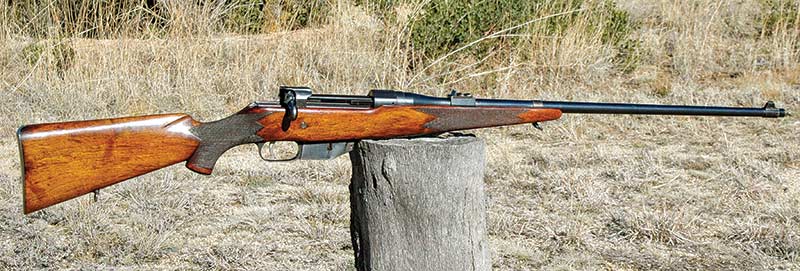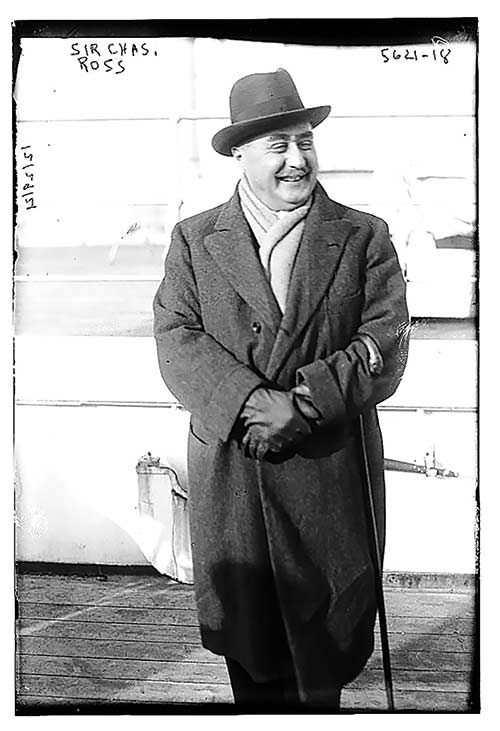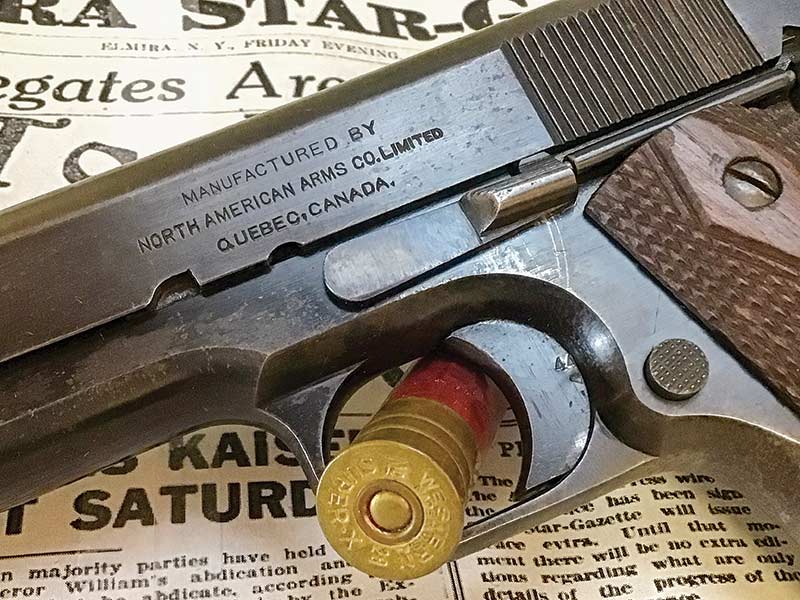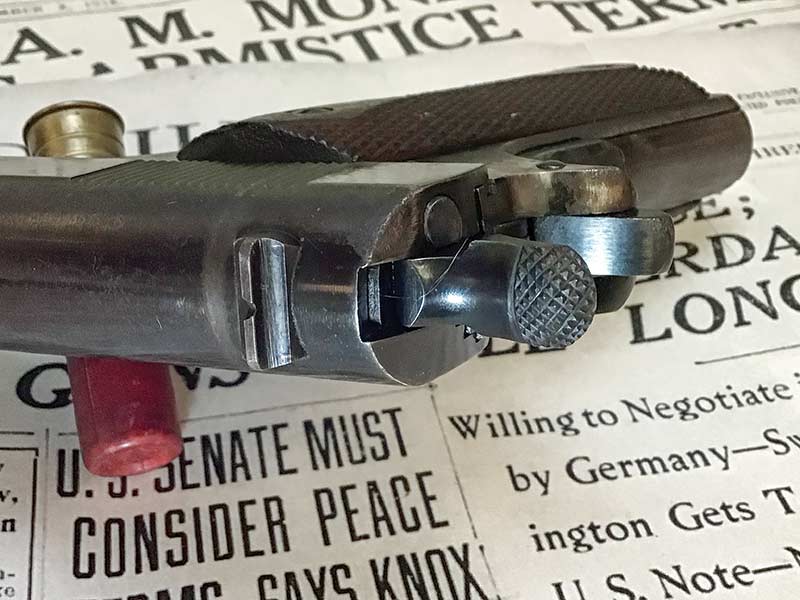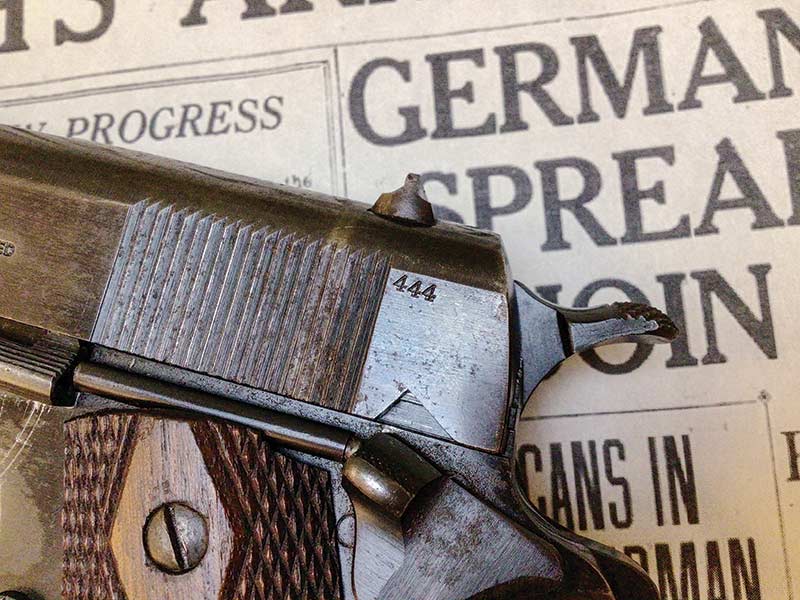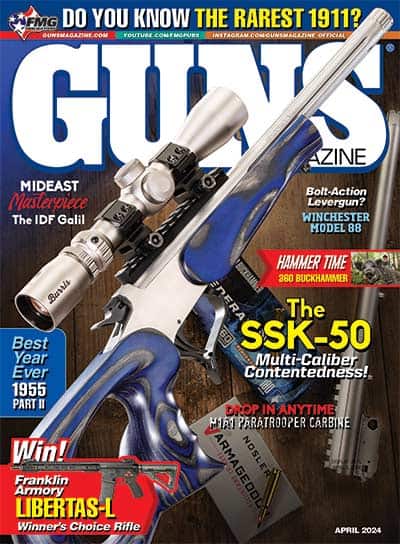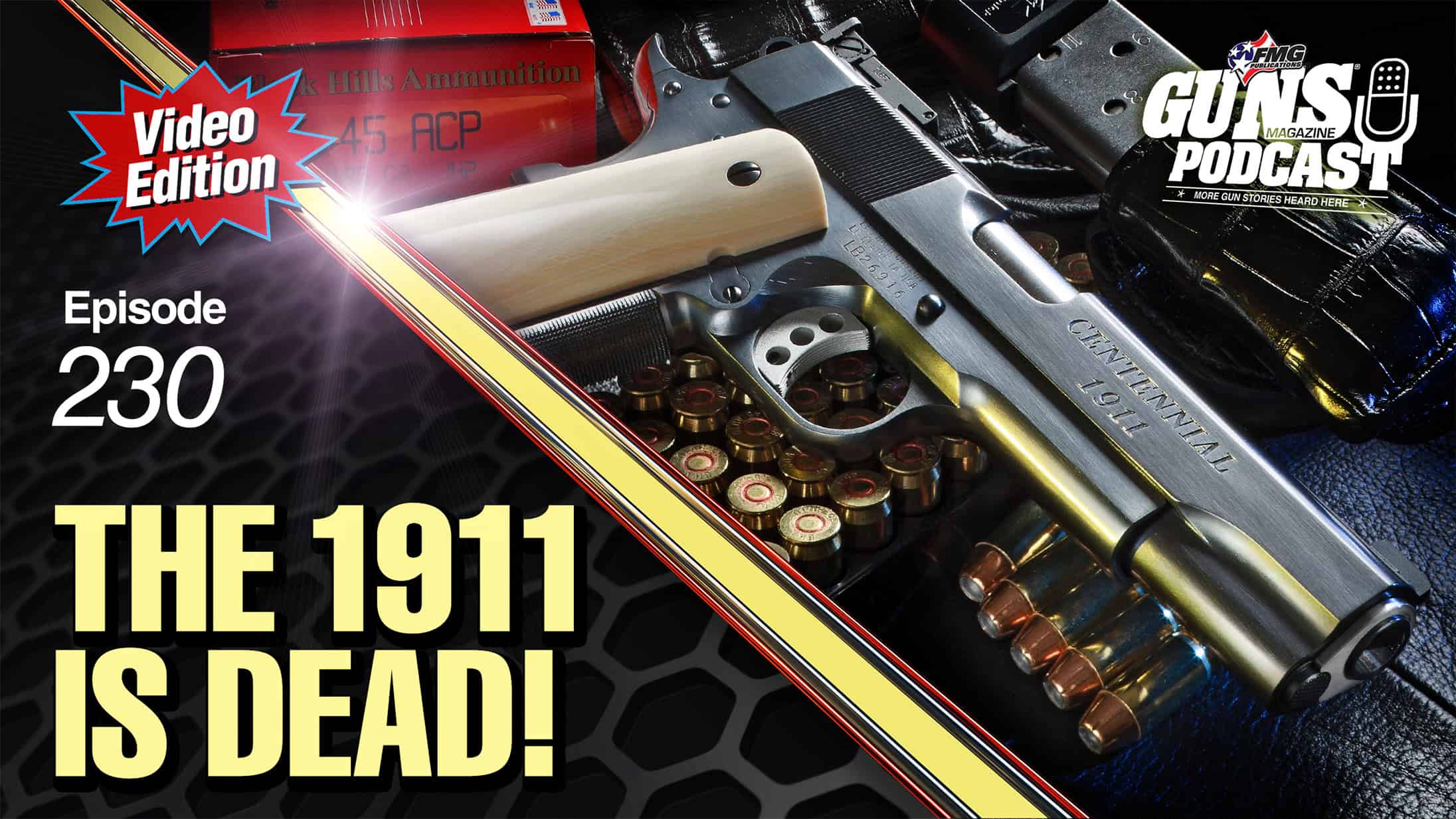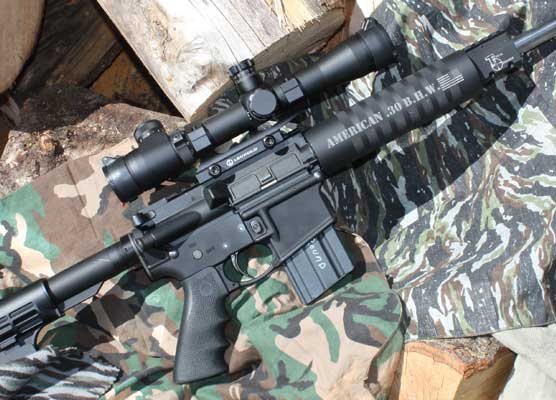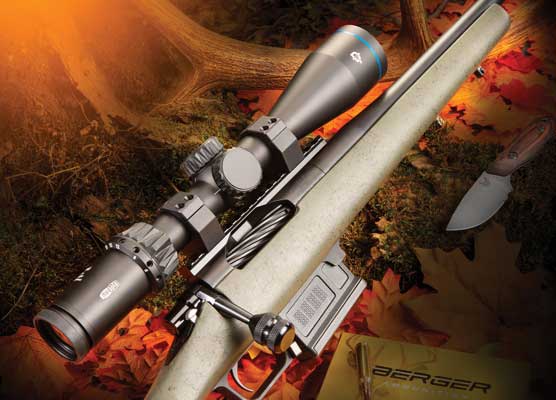North American Arms 1911
Rarest GI Pistol?
Writing about the 1911 pistol without using the word “iconic” is hard. I honestly can’t think of a better word. The total production for use by our military stands at around 2.7 million! Over the life of the service pistol, there is a long list of manufacturers enlisted to produce enough to arm the people of our armed forces.
Singer always comes to mind as being the rare and crown jewel of a collection. With a production number of 500, they are rare, especially in their original condition. But, there is another many are unaware of — the North American Arms Company 1911.
Rifles to Revolvers
The North American Arms Company 1911 story is a twisting tale starting in 1902 with Sir Charles Henry Augustus Frederick Lockhart Ross, 9th Barone. Sir Charles Ross was wealthy, a hunter, inventor and the largest land owner in Britain, owning 366,000 acres in Scotland. Ross invented a very accurate straight-pull rifle. He convinced the Dominion of Canada his rifle should be the official long arm of their military and, upon acceptance, built a factory on the Plains of Abraham in Quebec. The choice of sites didn’t win him any support from locals because it was also the revered location of the Battle of the Plains of Abraham of 1759. The battle was pivotal for the English in the French and Indian Wars.
Ross produced hundreds of thousands of rifles for the military, but when they were tested in the trenches of Europe, the rifles failed to the point some soldiers considered going into battle armed with one was suicide. The Canadian troops often discarded their Ross Rifles in favor of the Enfield Rifles of fallen British troops.
The failure of the Ross Rifle made headline news in Canada and many versions were made trying to correct the issues.
Finally, on March 23, 1917, the Ross Rifle Factory was taken over by the Dominion of Canada. The Dominion continued making modified Ross rifles for a short period. They then used parts from the Ross Rifles to develop the Huot Automatic Rifle, favored by those who tested it, but the Huot never made it into total production.
The U.S. had been trying to stay neutral in the War to End All Wars, but anyone paying the slightest attention knew the U.S. would be drawn in sooner or later. Two things happened to push President Wilson over the edge. The first was the resumption of the German U-boats sinking American ships. The second was the Zimmerman Telegram deciphered by British code breakers. The telegram was between Germany and Mexico. In it, Germany tried to convince Mexico to join them in exchange for the lands in the southwestern U.S. lost due to the Mexican-American War.
Bluntly, due to dysfunctional bureaucracy, our military was unprepared when the U.S. entered the war.
When the U.S. joined the war on April 6, 1917, it had maybe 110,000 handguns, and they were a mixture of outdated Colt revolvers from the late 1800s, more modern and powerful Colt revolvers from the early 1900s and roughly 80,000 Colt 1911 semi-automatic pistols.
Woefully under-armed, military statisticians calculated the pistols required to fight the war. As the realities of trench warfare sunk in, the numbers kept climbing until they realized the U.S. military needed some 3 million 1911 pistols! While Colt was improving production radically, it was apparent their production alone wouldn’t be enough.
Uncle Sam went looking for other factories that could retool to produce firearms. One of those companies was the Russell Motor Car Company in Canada. Still, the factory was already working on the war effort making munitions, so on June 28, 1918, a new company, North American Arms Company Limited, was incorporated. According to writer Edward Meadows, six Colt Model 1911 pistols were shipped to the new company as examples for U.S. Ordnance Contract P-11092-1952SA. It was also agreed the U.S. Ordnance Department would supply the raw materials.
While a new company was incorporated, the Russell Motor Car Company was still involved as T.A. Russell, President of the Russell Motor Car Company, was also the president of the new arms manufacturer. H.C. Scull was Vice president of the Russell Motor Car Company and likewise the arms company. Thomas Craig, former manager of the Ross Rifle Company, was the manager. Contrary to what others have theorized, no newspapers of the day mentioned Ross having a position in the North American Arms Company.
Ross Rolls Again
In July 1918, North American Arms leased the old Ross Rifle factory for $300,000 annually. Newspaper articles proclaimed production would start in September 1918. The contract for the pistols was to be completed by December 31, 1919, with a plan to produce 2,000 per day once in full production for a total of 500,000 by the end of the contract. In late October, ads were placed in local newspapers advertising the need for tool makers and inspectors.
The idea of a semi-automatic firearm was still beyond the thinking of many local reporters, as most wrote the contract was for revolvers or automatic revolvers. Some in the U.S. Ordnance Department had doubts about the ability of Canadian firearm production as they considered our ally to the north to be decades behind the U.S. in manufacturing.
On November 11, 1918, the Armistice ended the war. The need for arms vanished overnight. Most contracts with the U.S. Government were terminated, including the agreement with North American Arms Company, suspended on December 4, 1918.
A year later, the empty factory was considered useless and plans were made to sell what machinery could be sold, scrap the rest and demolish the buildings to expand the battlefield park. On December 27, 1919, an article in the Montreal Gazette spotlighted the scrapping of thousands of pistol parts. The reporters claimed little would be required to assemble them into useable firearms, to the point there was concern they would fall into the wrong hands!
The total production number of the North American Arms Company is estimated to be less than 100. They are considered to be toolroom samples made during pre-production as machines were brought online and tooling adjusted.
The stamping on the left side of the frame is thus:
MANUFACTURED BY
NORTH AMERICAN ARMS CO. LIMITED
QUEBEC, CANADA
Some collectors do not consider the NAACL 1911 to be genuine U.S. military arms as they were never accepted, inspected, or proofed for use by the U.S. military. Still, others are quick to point out they are the direct product of a U.S. military wartime contract.
Collector’s Item
With so few examples, collectors strive to obtain one and prices reflect it. Most examples run six figures and some reached almost $200,000 at auction! With prices escalating, counterfeits and fakes make their way into the market. Collectors should research and study known examples.
One of the noteworthy traits of a North American Arms Company 1911 is the poor finish and stamping. It is speculated a caustic salt-type finish was used. This type of finish tends to flake off over time. Any example not showing flaking should be suspected of refinishing or forgery.
Another item is the stamping of LIMITED on the left side of the slide. The font of the lettering gets progressively smaller as it is read. And, unlike other contract 1911 pistols, the serial number is stamped on the rear of the left side of the frame, on the left side of the trigger, and hidden under the left stock. Most examples fell between 1 and 100, but a few had a triple-digit serial number of the same number, such as 333, 444, and 555. Even rarer are examples with four-digit serial numbers following the same pattern.
Other traits common to North American Arms pistols are no lanyard loop, the ejection port stops at the break from round to flat on the right side of the slide and the stocks have 13 rows of checkering between the screws. Most had a smooth hammer, but a few like the pistol shown, featured checkering.
A few rare examples exhibit a slightly different slide marking as shown.
W.E. LAWTON
NORTH AMERICAN ARMS CO
QUEBEC, CANADA
DEC. 19th 1918
Some believe Lawton was the managing director of the company at the time. The date placed it five weeks after the war ended.
Tooling up to produce a firearm is extremely expensive, and with no income from the contract, the new company suffered heavy losses. On February 24, 1920, a settlement was reached between the North American Arms Company and the U.S. government, resolving all claims against the contract.
So what happened to Sir Charles Ross? In the years following the war’s end, Ross petitioned the Dominion of Canada for compensation for the seizure of his factory, machines and rifles. He asked for $18 million. He received $3 million.

